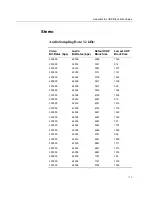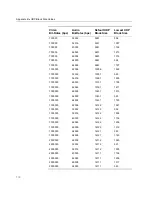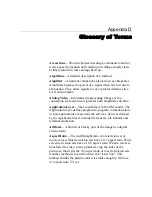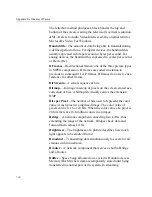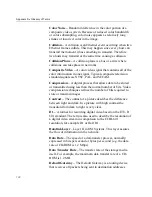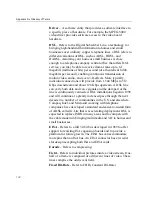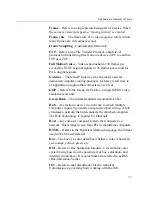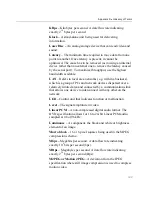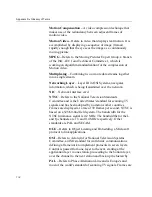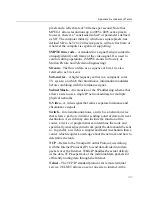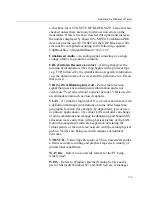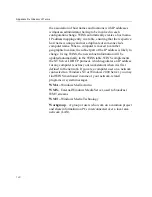
Appendix D
•
Glossary of Terms
applications, buffers store video or audio data until there is
enough information for the stream to be composed.
Bus Topology
–
A LAN network in which all nodes connect to
the same cable. Data transmit across this one cable.
CBR –
Refers to Constant Bit-Rate and stands for the bit-rate of
a data stream remaining constant during compression
throughout the entire encoding process. This parameter may
also be referred to as Fixed Bit-Rate.
CCIR-601 –
A standard (now
known as ITU-R 601) that
defines the encoding parameters of digital television for studios.
ITU-R 601 refers to color difference (Y,R-Y, B-Y) and RGB
video. It defines sampling systems, RGB/Y, R-Y and B-Y
matrix values and filter characteristics. ITU-R 601 usually
refers to color difference component digital video (as opposed
to RGB) for which it defines 4:2:2 sampling at 13.5 MHz with
720 luminance samples per active line and 8 or 10-bit
digitizing.
Clip
–
A segment of a video or an entire video being considered
one unit based on content.
Coaxial Cable –
Cable consisting of a
central copper wire
being surrounded with insulation and a grounded shield of
braided wire. Coaxial cables are widely used in the cable
television and computer industries. It is less prone to
interference than regular wire cables.
CODEC
–
Acronym for encoder and decoder.
Connectionless vs. Connection-oriented Protocols –
When
using a connectionless protocol, hosts are sending data without
establishing a connection with the recipient. The host does not
know whether the data arrive at their destination.
Connection-oriented protocols require a designated path to be
established between the sender and receiver.
Coding –
The process of representing a varying function as a
series of digital numbers.
127



